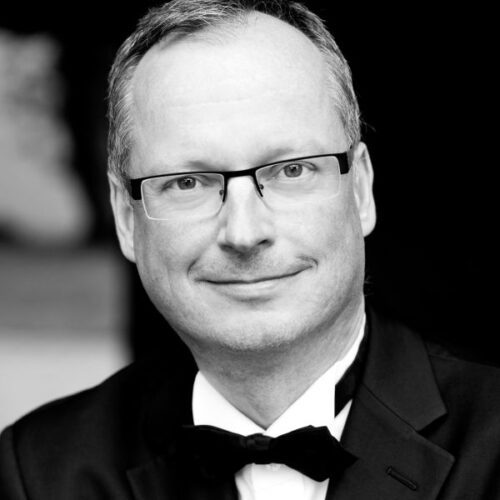Additional Information
The Ensemble ArtChoral (formerly the Ensemble vocal Art-Québec) is currently undertaking the ambitious project of tracing the history of choral singing from the 16th to the 19th century. This historical journey, which began at the beginning of the pandemic, will unfold in 11 discs recorded by ATMA Classique, as well as several concerts and video recordings. The project will take place over three years.
After the release of volume 7, devoted to Christmas carols, the ArtChoral Ensemble is now offering volume 3, entitled Baroque II. This one is dedicated to the late baroque, and therefore contains pieces composed from the second half of the 18th century. On this album, well-known composers and discoveries are mixed together.
PAN M 360 spoke with Matthias Maute, conductor of the ArtChoral Ensemble, who is behind this great project. We wanted to know more about the proposed listening path, the particularities of this album, as well as its inclusion in the overall project.
PAN M 360: How did this great project to trace the history of choral singing come about?
Matthias Maute: This project was born during the pandemic. We were able to find funding to do concerts and create this great project of records that will last for three years.
PAN M 360: The ArtChoral Ensemble did a lot for the music community during the pandemic. Can you tell us more about this?
Matthias Maute: Our project does not stop with the recording of 11 discs. ArtChoral is also working to create partnerships with other choirs to organize tours with the singers. Choristers are the lowest paid people in our music business. During the pandemic, there was a lot of work that went unpaid. We also want to honor the great choral tradition we have here in Quebec. The ArtChoral Ensemble has a history of over thirty years, and I am very happy to be able to lead this ensemble and to be able to present this project.
PAN M 360: How did you choose the pieces that appear on the album?
Matthias Maute: As far as the repertoire is concerned, it’s very easy to fall into the German repertoire. Especially in Germany you find repertoire for singers, it was very anchored in the culture of the time. Composers wrote for a cappella choir.
PAN M 360: So the theme that would unite all the pieces on Baroque II would be German a cappella music?
Matthias Maute: The treasures of the a cappella repertoire of the second half of the 18th century are to be found in the Germanic tradition, so it was a great pleasure for me to draw on this repertoire.
PAN M 360: Some of the composers on the album are lesser known and few of their works have come down to us. Was there a process of reconstitution necessary? How did you choose the repertoire for the album?
Matthias Maute: There is no real need to reconstruct. It’s surprising how vast the sung repertoire is in the Germanic regions. So I started my research with the Bach family, since Johann Sebastian Bach is in himself very important for the choral art, especially with his motets. Bach was like a sun, with many composers working around him. Homilius, some of whose motets are on the disc, is very little known. He was a student of Bach.
PAN M 360: What is the listening path proposed by the album?
Matthias Maute: All the pieces are religious, in the Lutheran tradition, with the exception of the piece by Lotti. The first motet begins in darkness and chaos. So on the album we have a kind of story, that is to say, at the beginning there is the depression, and at the end you have the illustration of the soul that finally tears itself away from the body and rises to the top. Through work and effort, one manages to detach oneself. There is this wonder, this light that allows us to reflect on the problems of our life. This journey from the bottom to the top is represented in the musical language of each piece and throughout the album.
PAN M 360: The ArtChoral Ensemble’s project also includes a video part. Why did you make this choice?
Matthias Maute: Indeed, the videos are the other part of the production. There are several reasons for this. We realized that less and less people have CD players and that less records are being bought than before. Also, since the pandemic, life was very much on the computer. To reach people globally, through the computer, proved to be a good avenue for us. We produced videos of our concerts for the global community to see. And, in general, it is a good tool to promote our project. So everyone can see and hear our work.
PAN M 360: In this context, what would be the difference between preparing for a record and preparing for a concert?
Matthias Maute: For me, there is not really a difference in the preparation. There is a difference in the way you organize the program. For a record, you always have a hook at the beginning. There are also all the technical requirements, everything has to be perfect at the same time and you can go back and listen to the pieces again. During the concerts, you have to keep a strong moment at the end. For the group, for the choir, it is also very different in concert, since there is communication with the public, the sound and the hall.
PAN M 360: And finally, what is next for the ArtChoral Ensemble?
Matthias Maute: We have already recorded a lot! We have two more albums to do, which will be recorded in the fall of 2023.
The albums of the ArtChoral Ensemble are recorded by ATMA Classique. Two of the 11 discs tracing the history of choral music since the 16th century are already available: volume 7, devoted to Christmas, and recently volume 3, Baroque II.
























